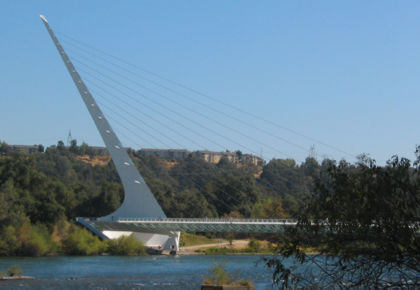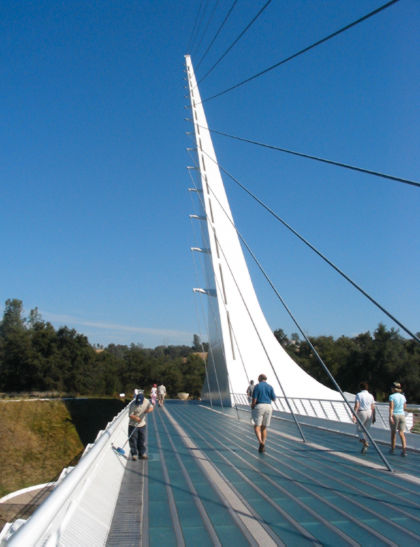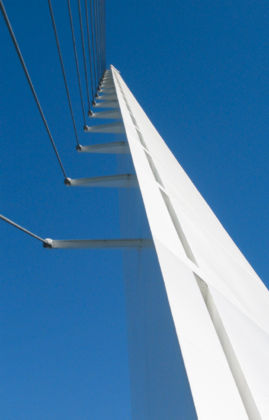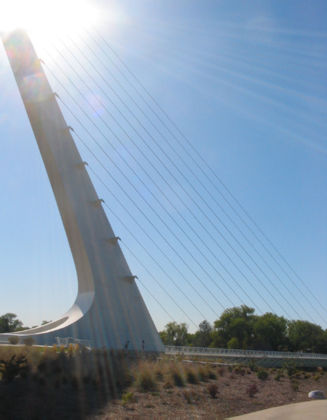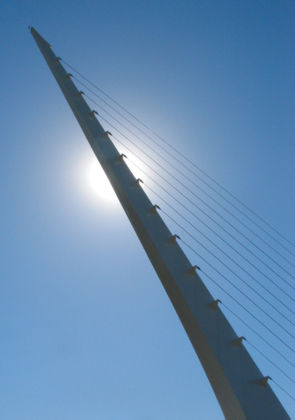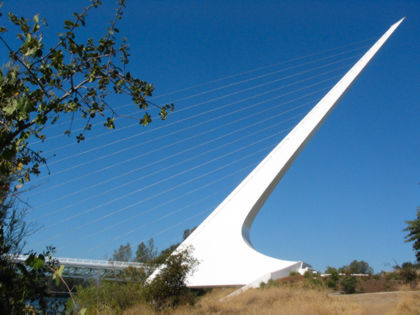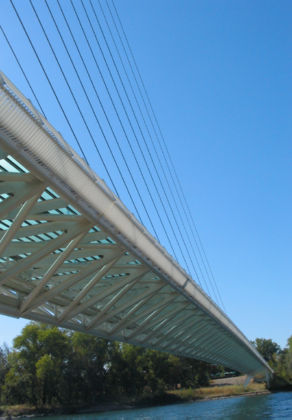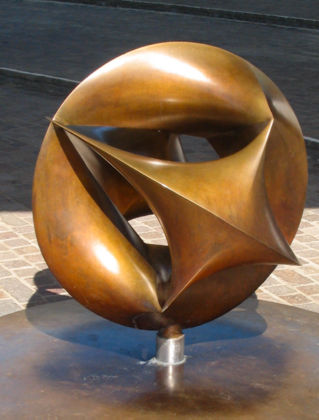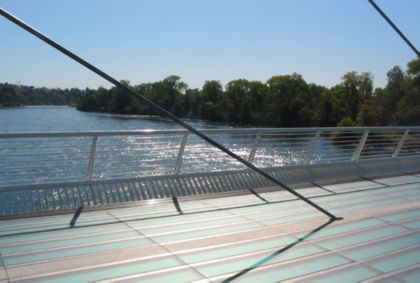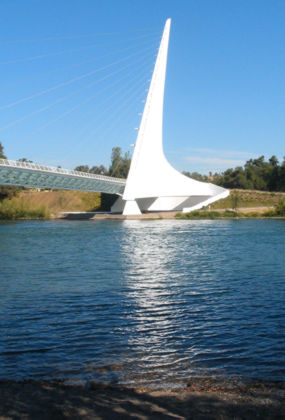OK, last week I promised more about Yosemite. Here goes:
Day 1 (Tuesday):
Arrival at the Bed & Breakfast. We track down the owner of the B&B, a retired federal judge who has a small ponytail and walks with a strange waddle/shuffle that suggests too much time on horseback or the need for hip-replacement surgery; perhaps both. (The judge, a purposefully crusty character, was responsible for dispensing justice within the national park’s borders; I sense litterbugs ending up in Leavenworth)
He shows us around. Reminds us to close the doors to keep the bears out.
We unpack, then retire to the back yard, where a large double hammock has been assigned to tenants of our room (called the Alpenglow, which describes that yellow-orangeish glow mountains get from the day’s last rays of sunlight). I lie down in the hammock, beer in hand, and briefly consider spending my entire vacation there. Temptation is strong, yet I resist.
Day 2 (Wednesday):
Having resolved not to spend vacation in the double hammock, I’m obliged to find a place to go hiking. Yosemite has hundreds of miles of trails, so settling on one is no small task. I fantasize that one day I might hike the Pacific Crest Trail, which starts in Mexico and ends in Canada. The trail goes through Yosemite, and has one stretch near the main road at Tuolumne Meadows, going to a place
called Glen Aulin. People who hike the whole trail are called "thruhikers" and I ponder the odds of meeting one. Given that only a few hundred attempt the whole trail every year, and that only a tiny fraction finish, and that the trail’s 2,000 miles long, and that it takes six to nine months to hike it, I see these odds at less than zero.
So I park my car at the Glen Aulin trailhead, and as I’m getting out, I see a bearded guy with a backpack headed my way. He’s wearing shorts and I notice his legs have a deep-brown tan you’d normally associate with beach lifeguards. I ask him if he’s a thruhiker and sure enough, he says "yeah" and asks me if I know where the grocery store is. I tell him it’s probably around here somewhere. He tells me he started out in Mexico, hiked to the southern Sierra, then caught a ride to the Canadian border and hiked south from there.
He seems to be in a hurry, which means he probably ran out of food yesterday because he knew he could resupply at the grocery store, assuming he can find it. We chat for another minute or so, then he’s off down the road in search
of the store.
About a mile down the trail, I see a backpack on the ground and an hiker soaking his feet in the Tuolumne River. "Are you thruhiking?" I ask him? "No, I’m just resting here," he says.
The Glen Aulin trail is a fairly easy hike, hillwise, though it’s a 12-mile round-trip rather than the 9.5 jaunt that my guidebook promises. I stop for lunch near a pedestrian bridge that crosses the river at the beginning of a
cascade. It’s another three miles to Glen Aulin and back from here, and I figure this is as good a turn-back point as any other. When I get back to the room and dig out my guidebook, I learn that three lovely waterfalls are just down the trail from where I gave up. At least I have an excuse to go back.
Day 3 (Thursday):
Another hike day. I choose the Panorama Trail, which starts out at Glacier Point and goes five miles, mostly downhill, to Nevada Falls, passing the little-known Illilouette Falls along the way. The trail forms a ragged semicircle with the Half Dome in the center. Along the way my eyes are always drawn to that strange hunk of ruck. Maybe the rock is so big that it has its own gravity, which just
naturally attracts objects with lesser mass. Or maybe the curved surface seems like a cathedral’s roof, giving it a divine aura.
Whatever the rock’s strange magic, it’s shrouded in morning mist when I arrive, adding to its mystique. It’s just layers of granite, I try to tell myself.
As for the hike: four miles of down and about a mile up; the opposite on the way back. Not too bad till about mile nine, when, scenery or no scenery, I’m getting sick to death of this trail.
Melissa and I have a real meal in the Mountain Room at the Yosemite Lodge (really expensive, too, but hey, we’re on vacation, right?).
Day 4 (Friday)
My feet beg for a day off, so Melissa and I set out in the car for a High Sierra road trip. We take Highway 120 out of the park at Tioga Pass and head south to an area called Mammoth Lakes, which is a major ski area in the winter but seems listless and devoid of purpose at summer’s end.
We have lunch at a little diner called Tom’s Place. Because we have to. Mostly, I stop and take pictures of the scenic splendor, which is abundant. After you’ve hiked up and down some of these hillsides, they seem much nicer from a distance. We stop at a place called Convict Lake, which is achingly gorgeous and surrounded by terrible gray peaks that seem to promise a bleak outcomes to any who dare to go there. The lake got its name from a famous jailbreak of the 1870s, when a band of desperadoes went on the lam, got involved in at least a couple shoot-outs with posses and had a showdown near this lake. A lawman was killed and some of criminals disappeared into the mountains, never to be caught. My hunch is they became coyote food after a couple days up there.
Day 5 (Saturday)
Tossing common sense to the wind, I decide to spend a weekend day in Yosemite Valley, which is mobbed with humanity. Mostly I’m wandering around looking for interesting things to take pictures of.
At one point I’m parked off the road and I see this young couple taking pictures of each other on this rock next to the Merced River. I offer to take their picture; the guy hands me his camera, I look through the viewfinder and the guy says, "hey, you’ve got it backwards." Sure enough, I’m looking through the wrong end of the camera. Yeah, so now that guy (he sounded French to me) thinks all American tourists are morons, but hey, hey probably already knew that, right?
The amazing thing about spending the day surrounded by masses of tourists is that the valley’s scenery trumps humanity. Every time I look up at the canyon walls I see an amazing rock formation that I hadn’t noticed before. Happens over a dozen times.
That night we went to dinner at the Wawona
Hotel and had another of those amazing meals more often associated with dining in San Francisco. After dinner we stopped by this little salon area where this buddy of Krustee the Innkeeper was playing piano and singing show tunes. A buddy of his takes over the piano for a moment and relates a tale of how he was performing at the famed Ahwahnee Hotel one night, when a woman in the audience requested that he play "Forever Young" to celebrate the woman’s mother’s 85th birthday.. You may remember Forever Young was recorded by Bob Dylan, who was once married to Joan Baez, who also recorded the song. Well, it was Joan Baez requesting that song for her mom that night.
The regular piano player guy comes back with a slideshow about the history of Yosemite. He tells us about the strange tradition of the firefall,
in which a huge bonfire was ignited at the top of Glacier Point, then shoved off the cliff for the amusement of campers down in the valley. The park service stopped the practice in the late 1960s — not because shoving an inferno off a three-thousand-foot cliff posed a forest fire danger, but because the park had become so popular that thousands of people would gather in the valley’s meadows to watch the firefall every night, trampling all the meadows’ tender grasses, flowers and other flora. Ah, tourism.
Well, those are the highlights. Sorry, no new pictures this week, I got lazy over the weekend and the camera never left the shelf.





